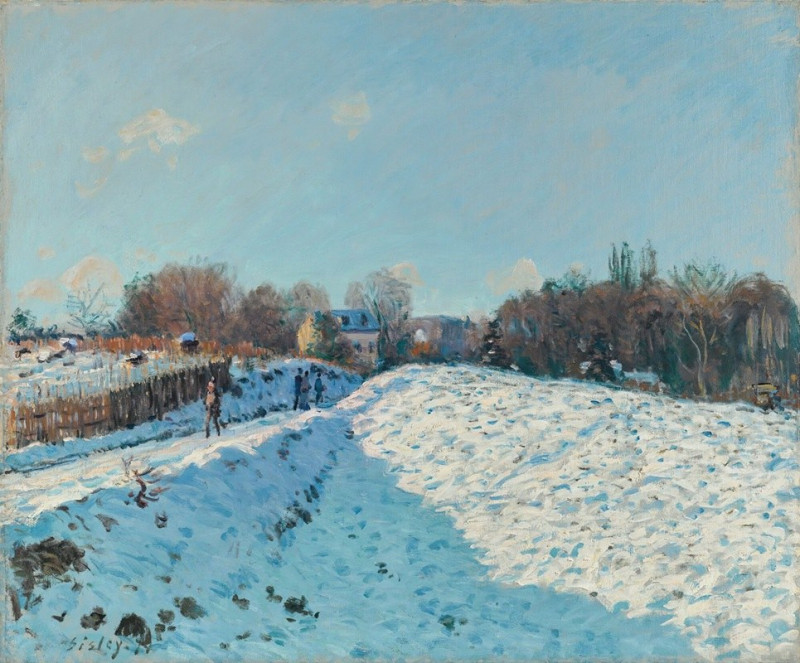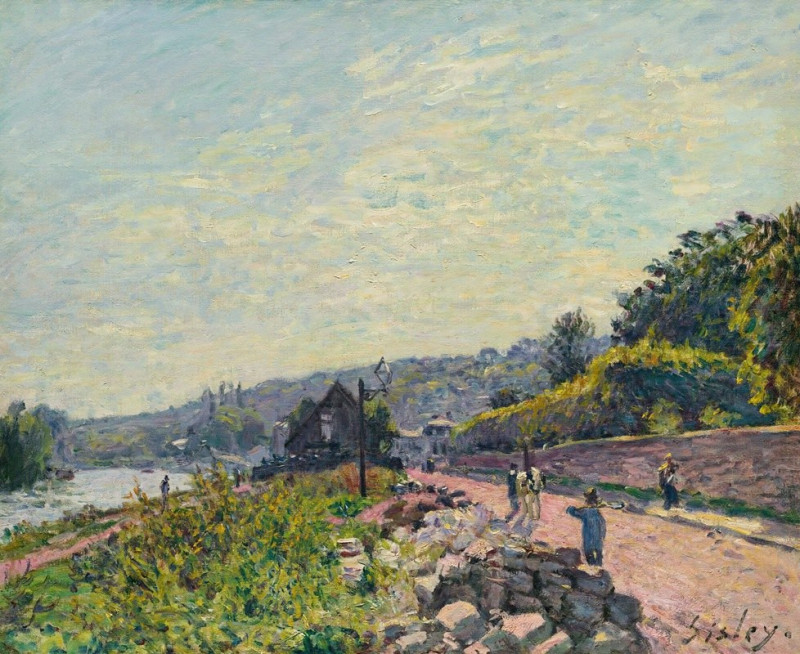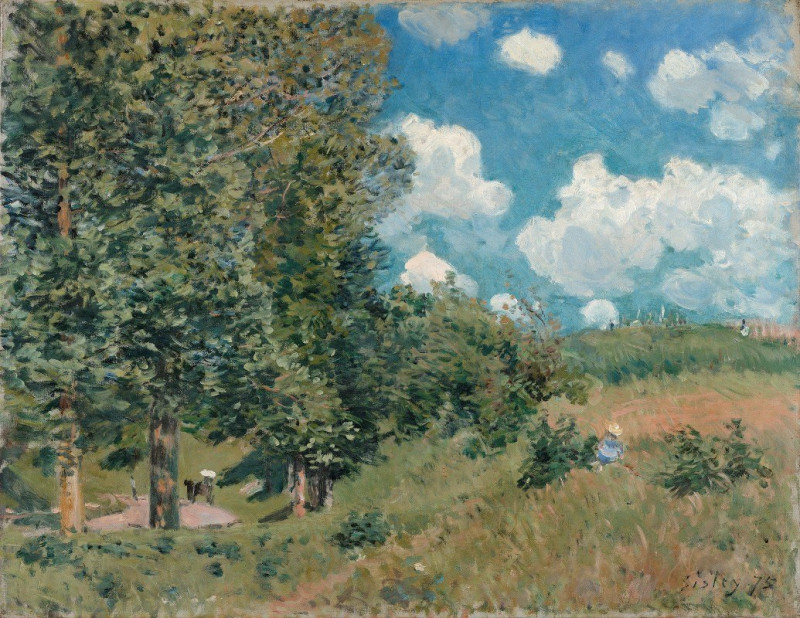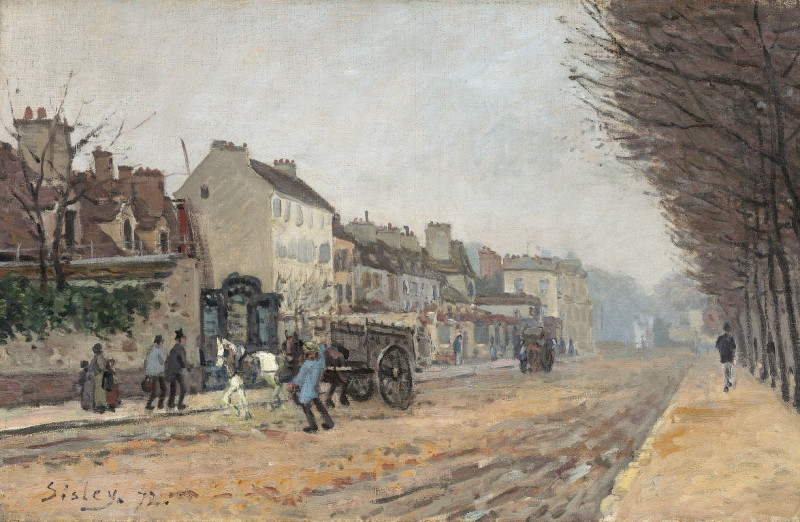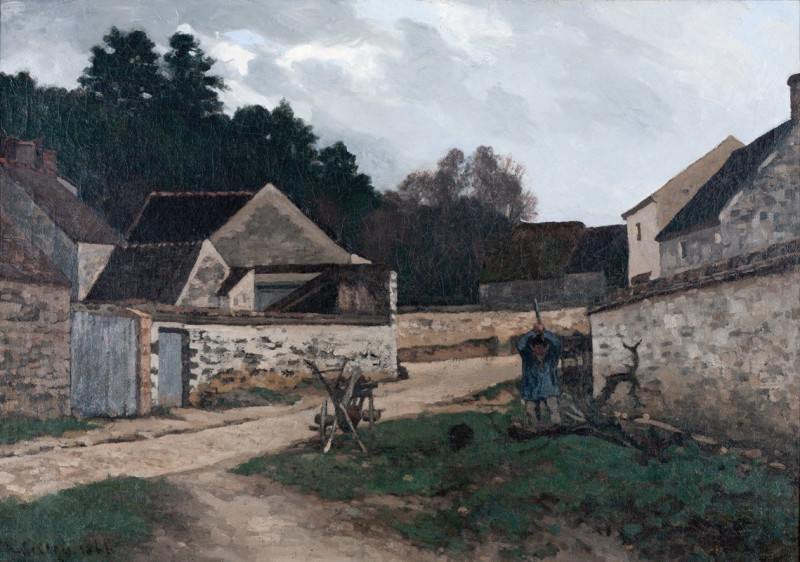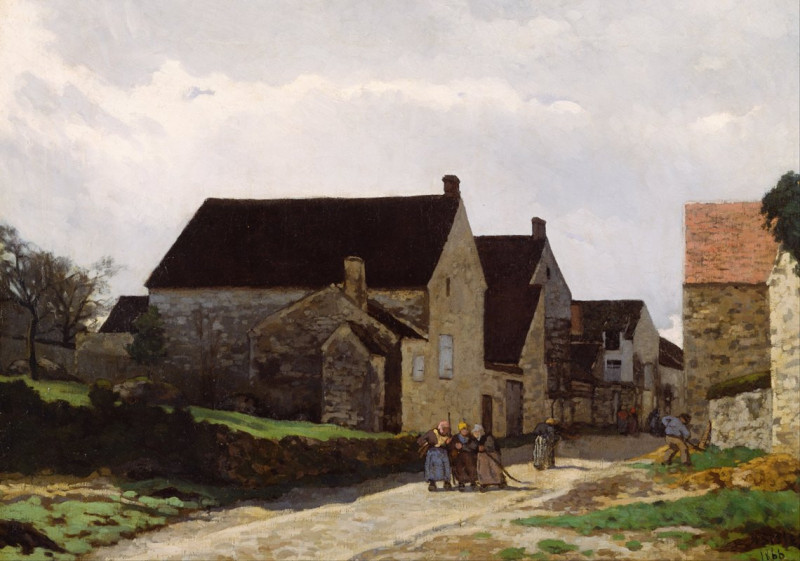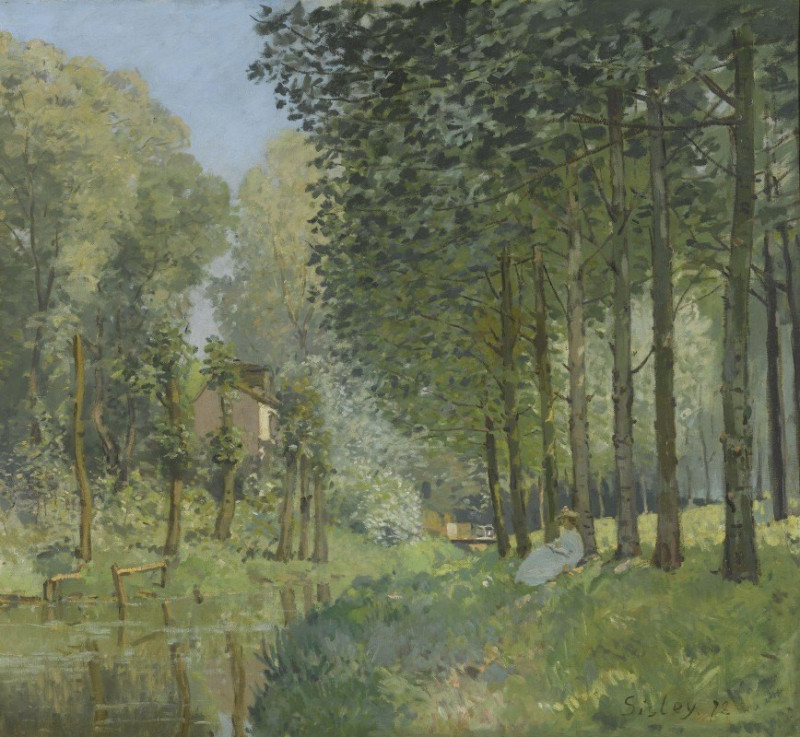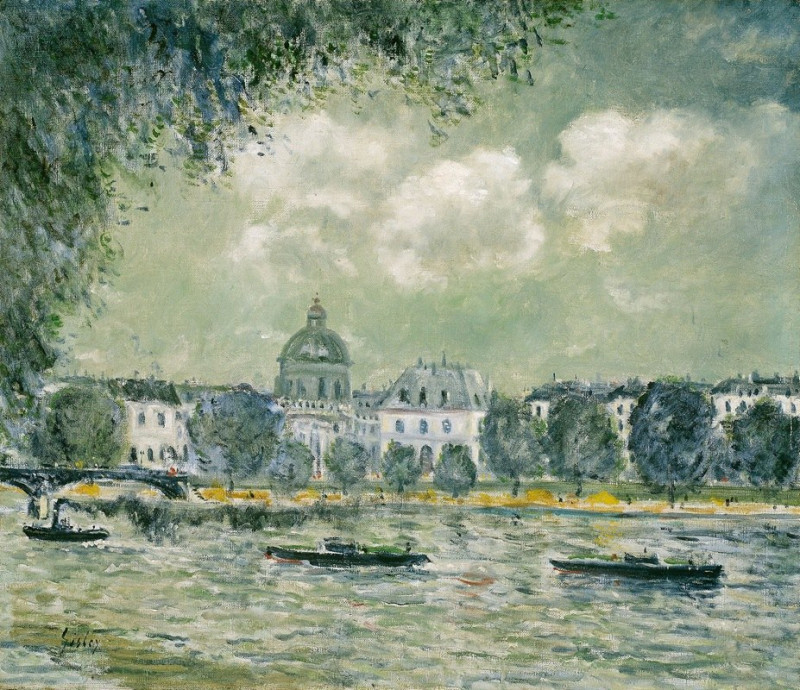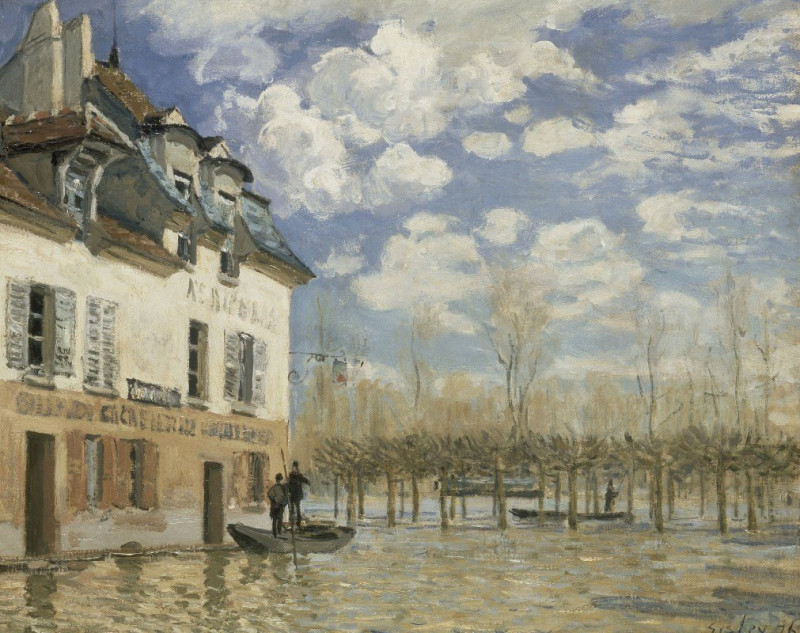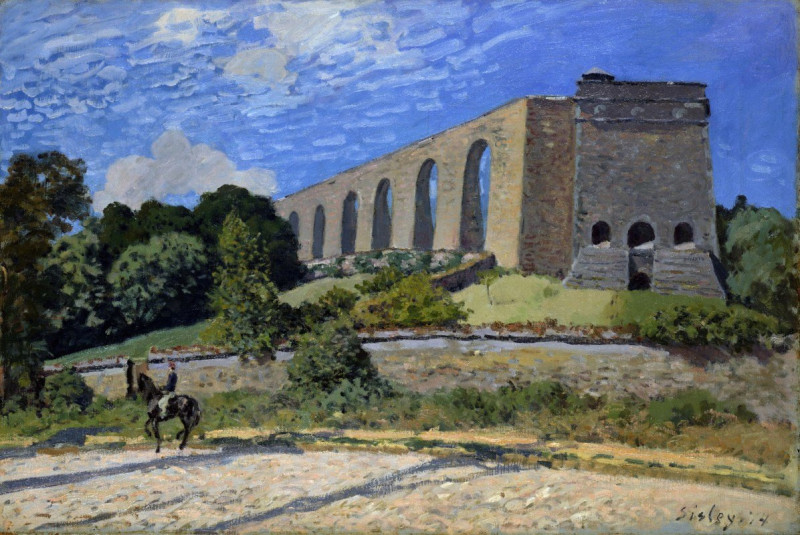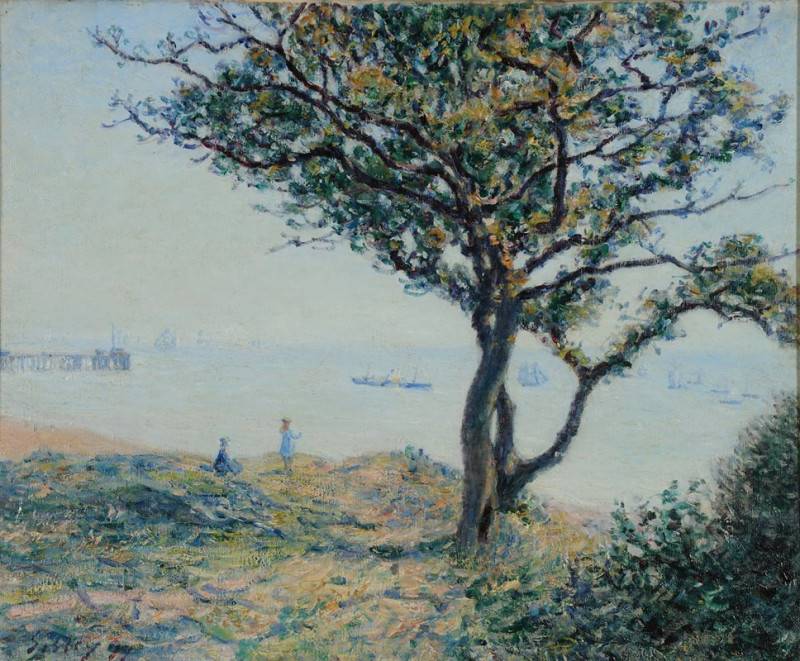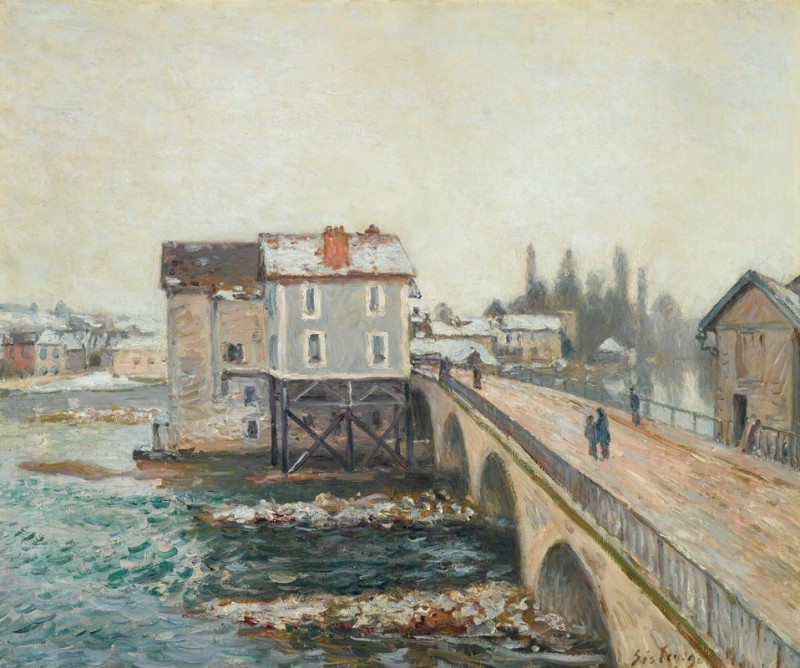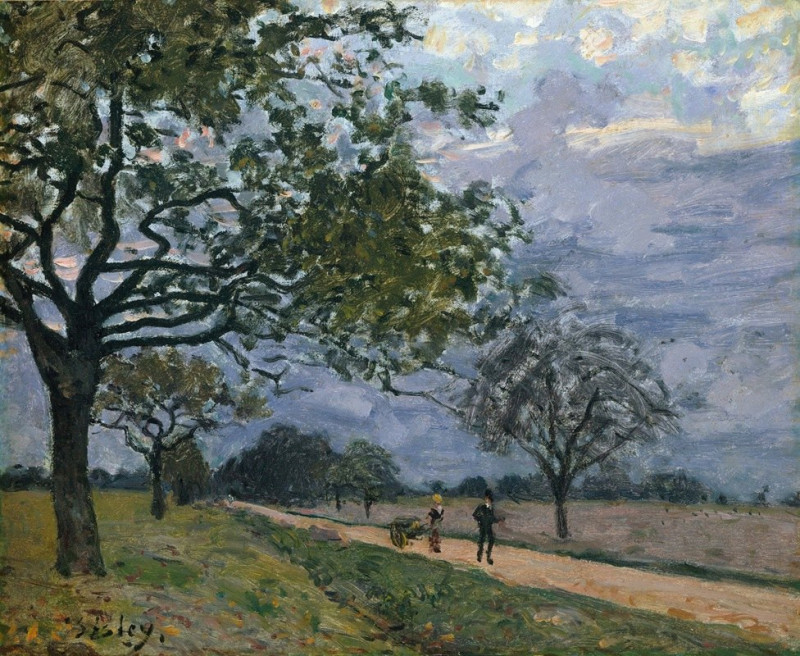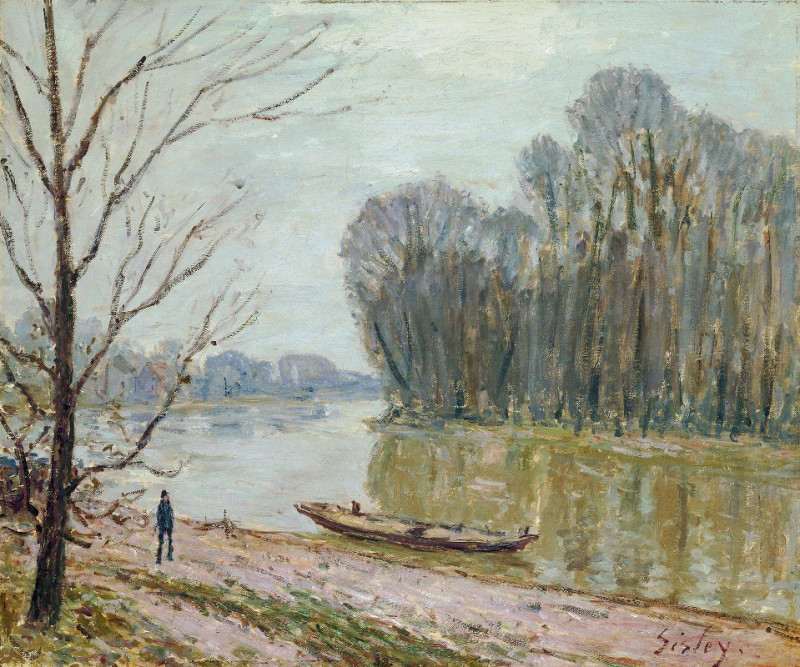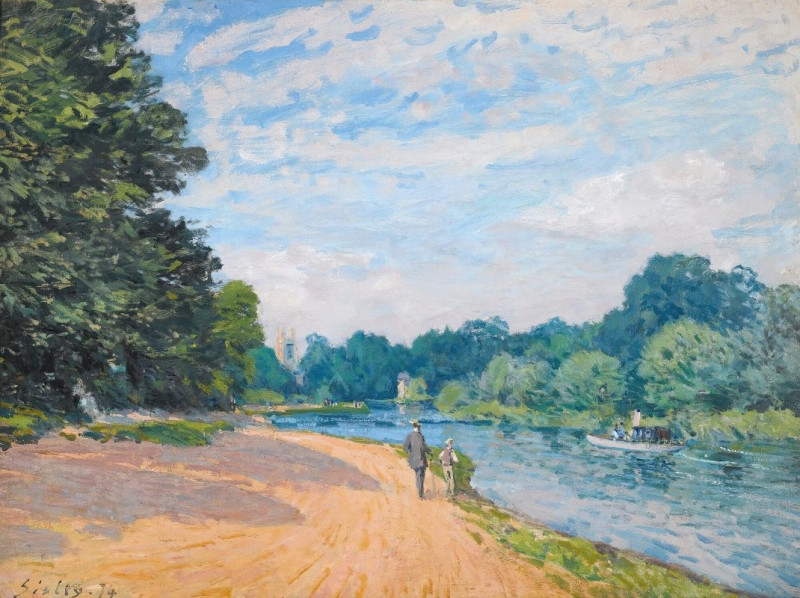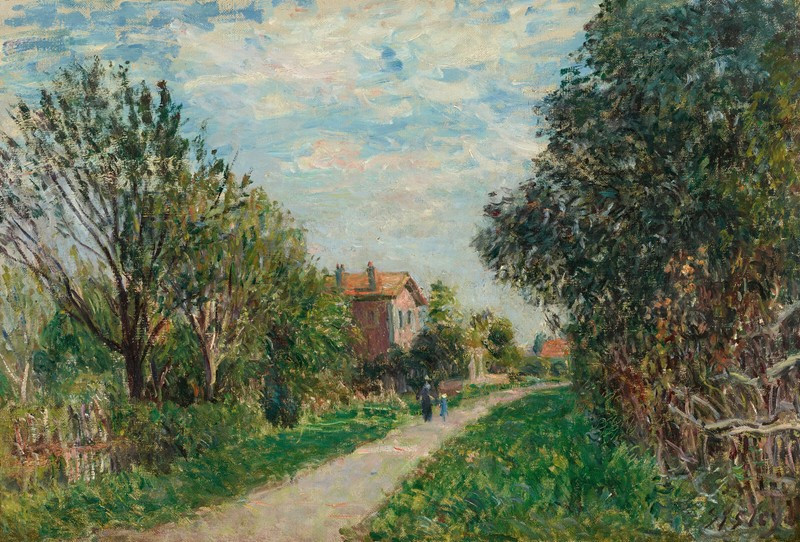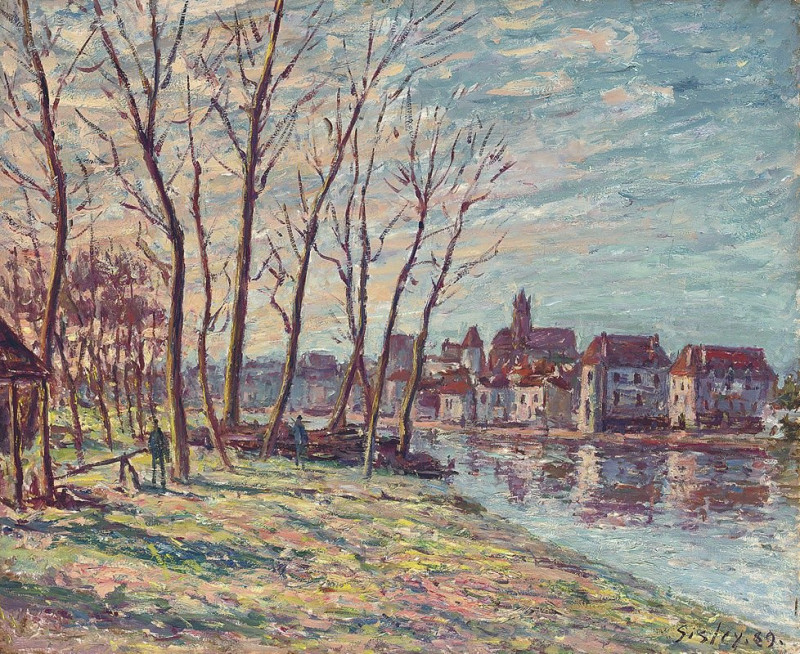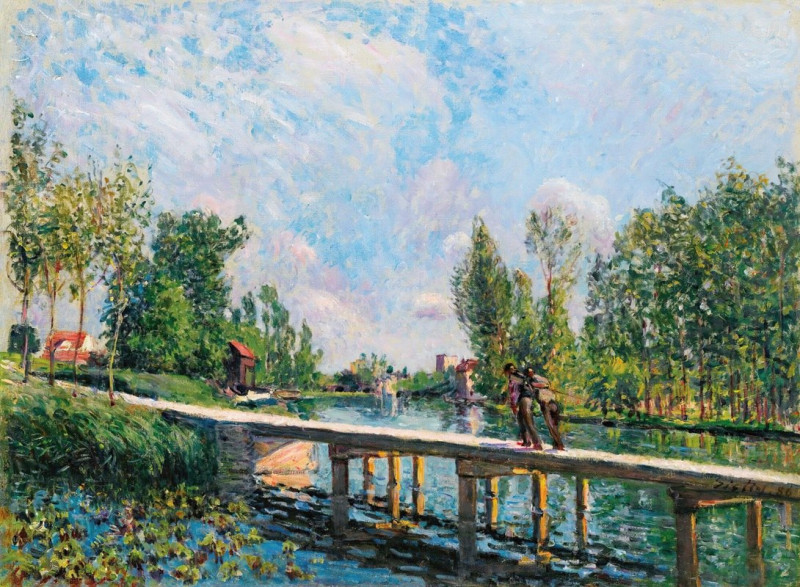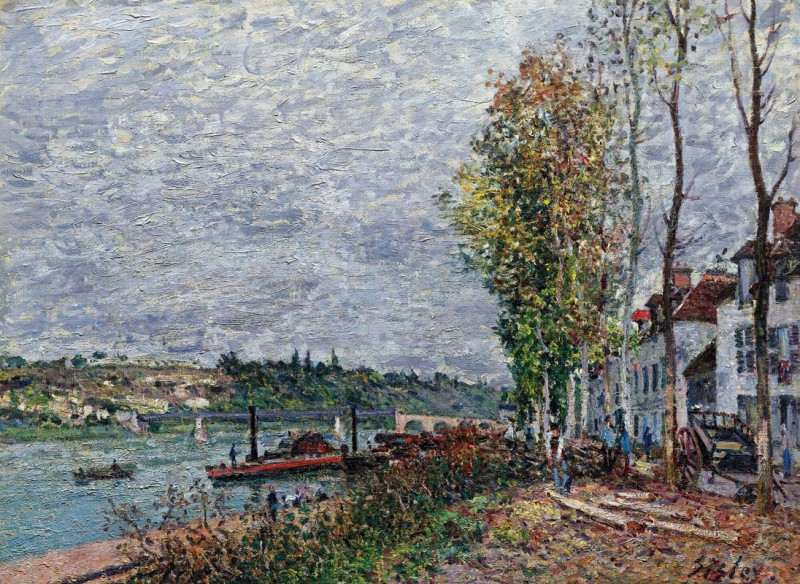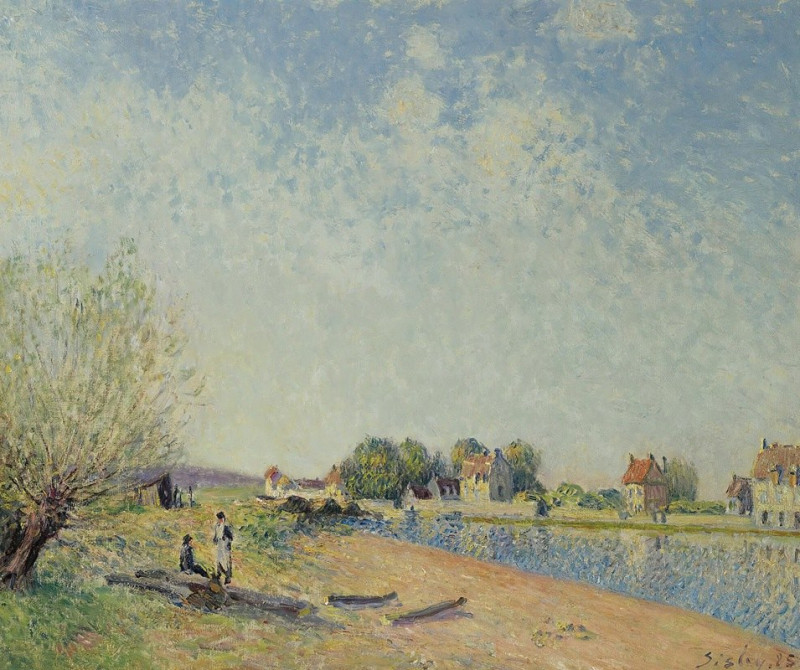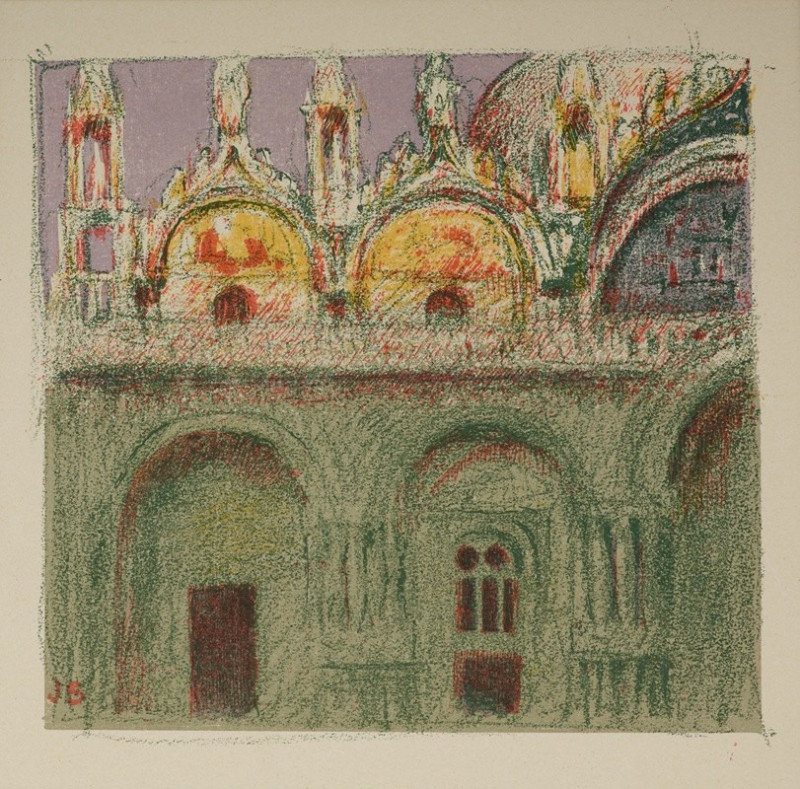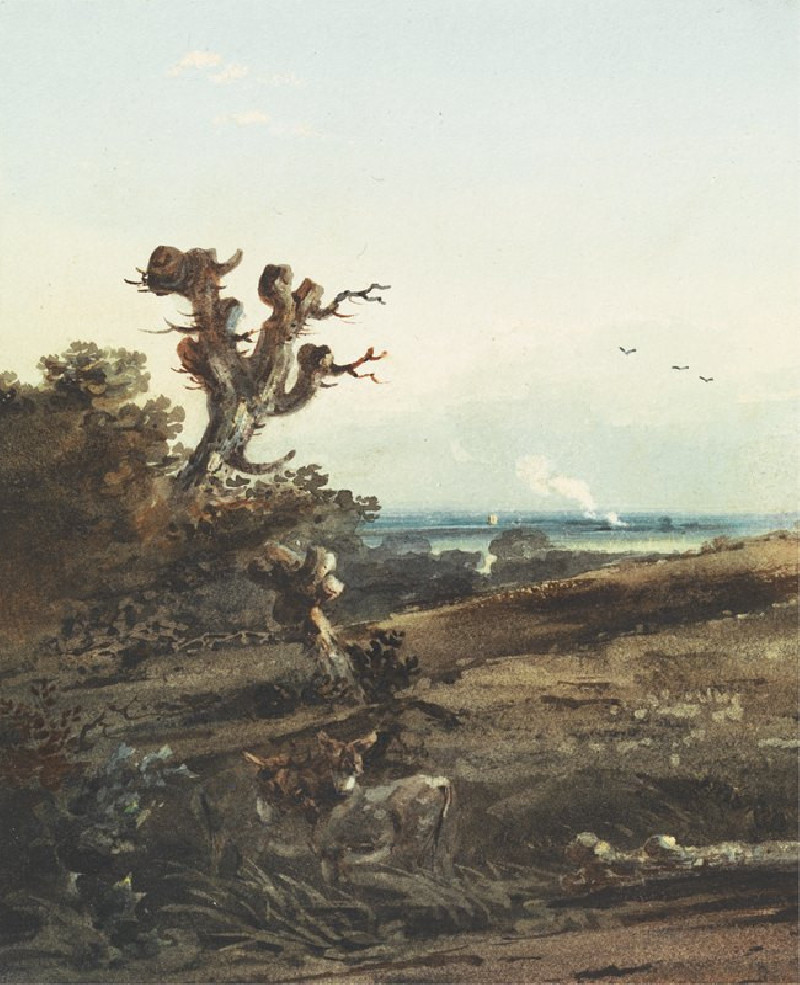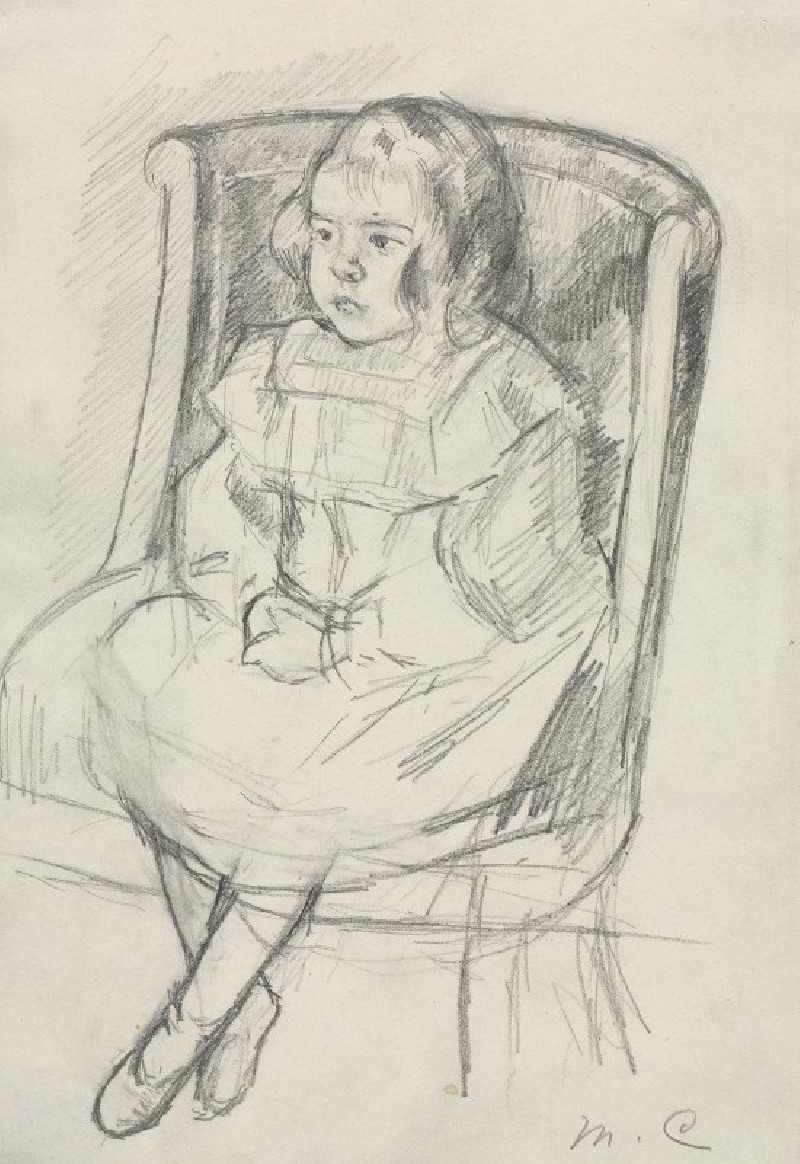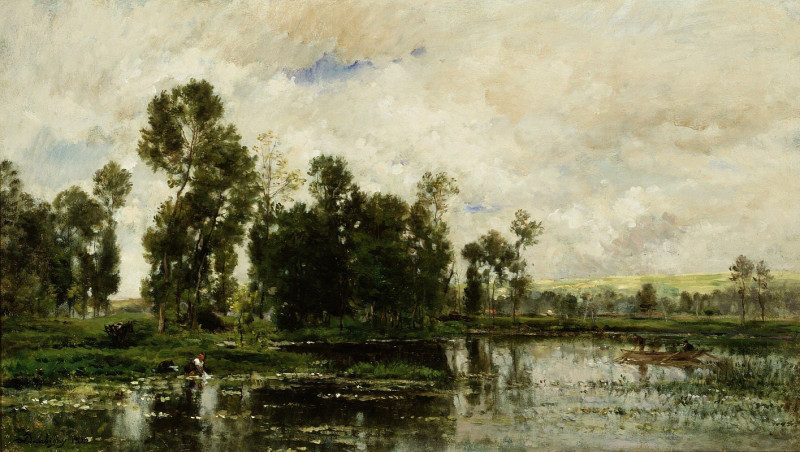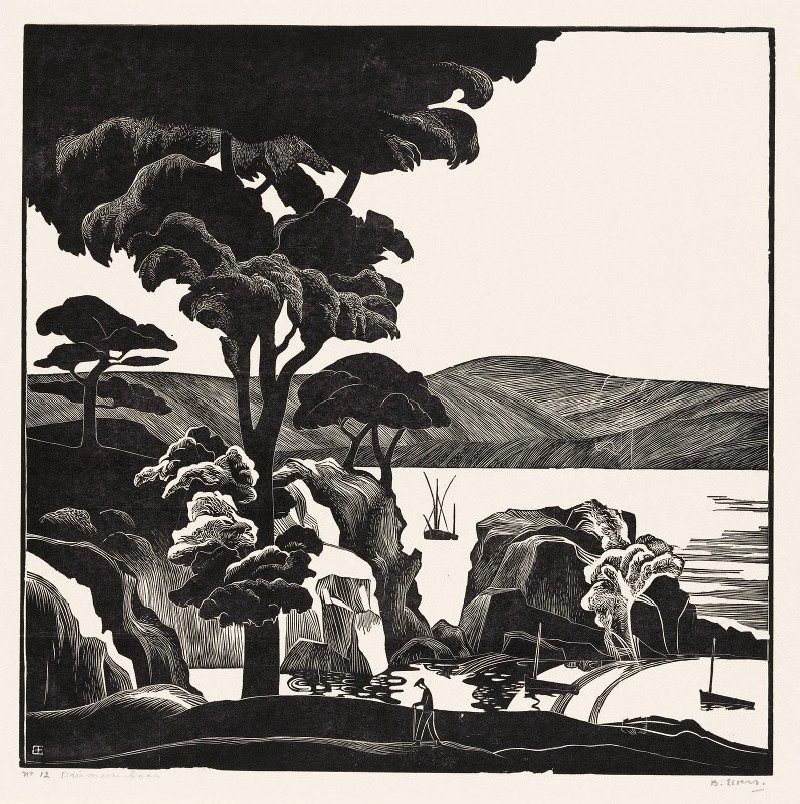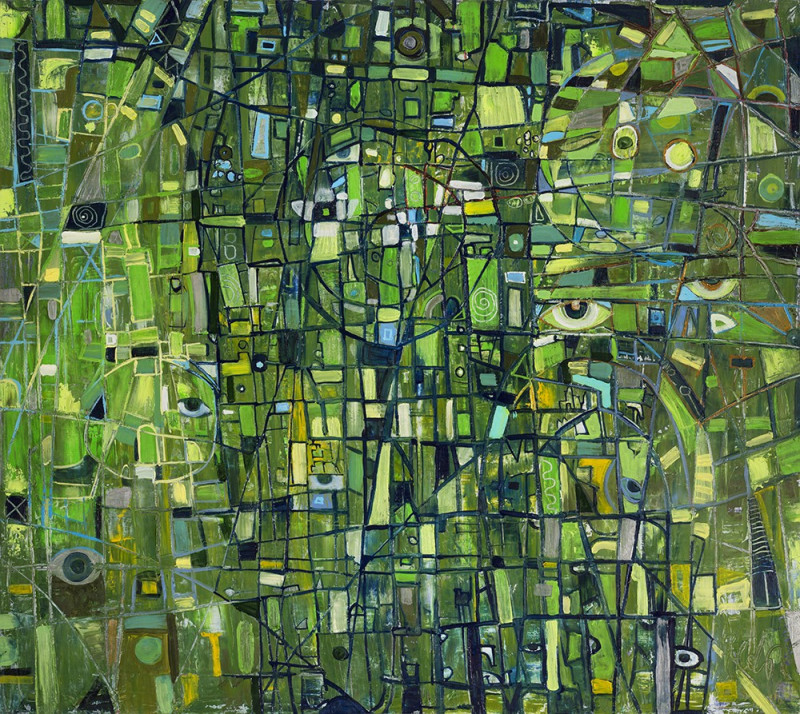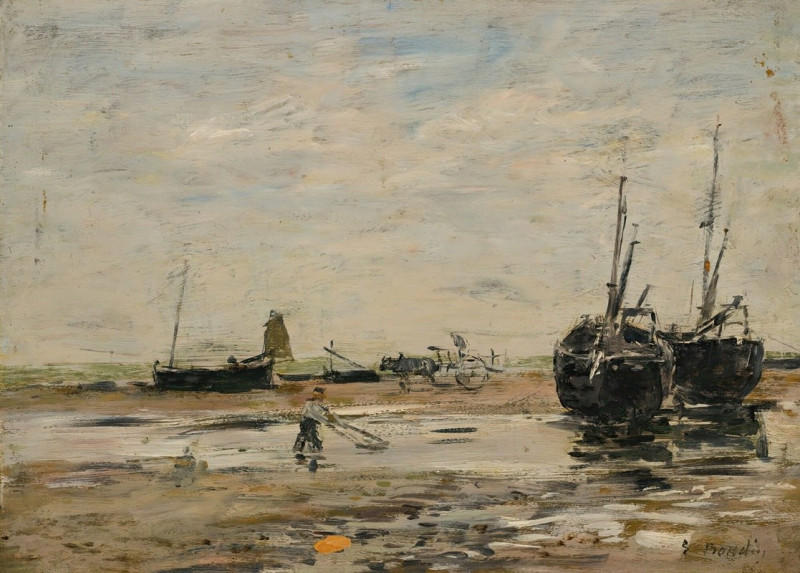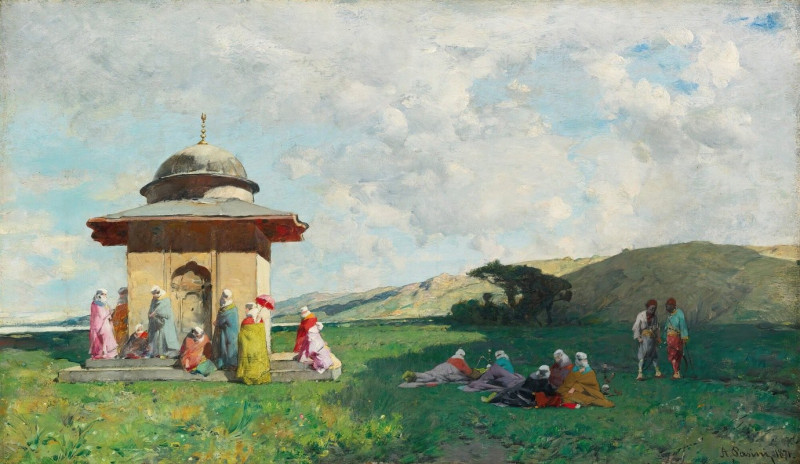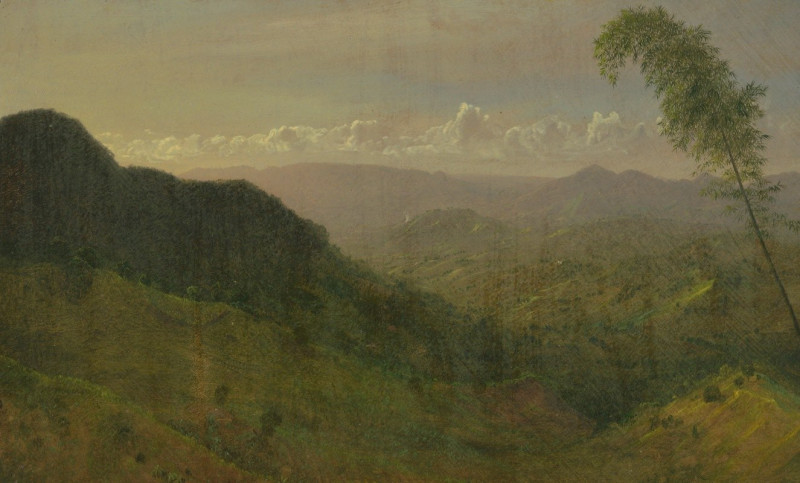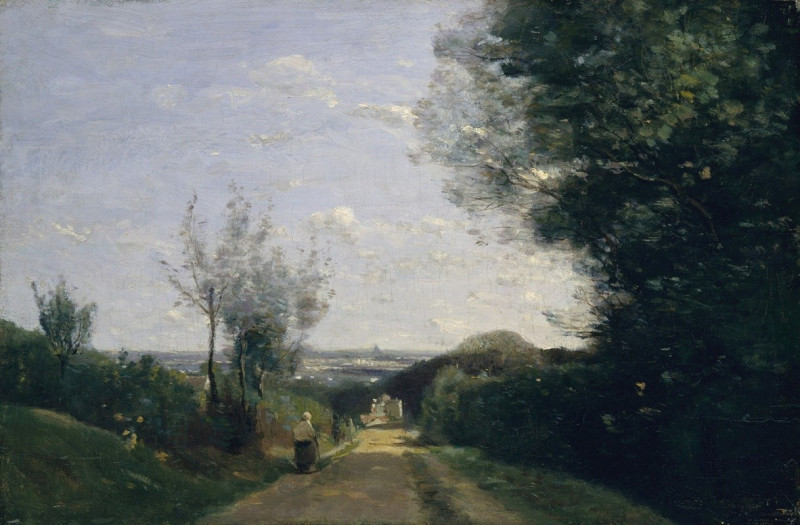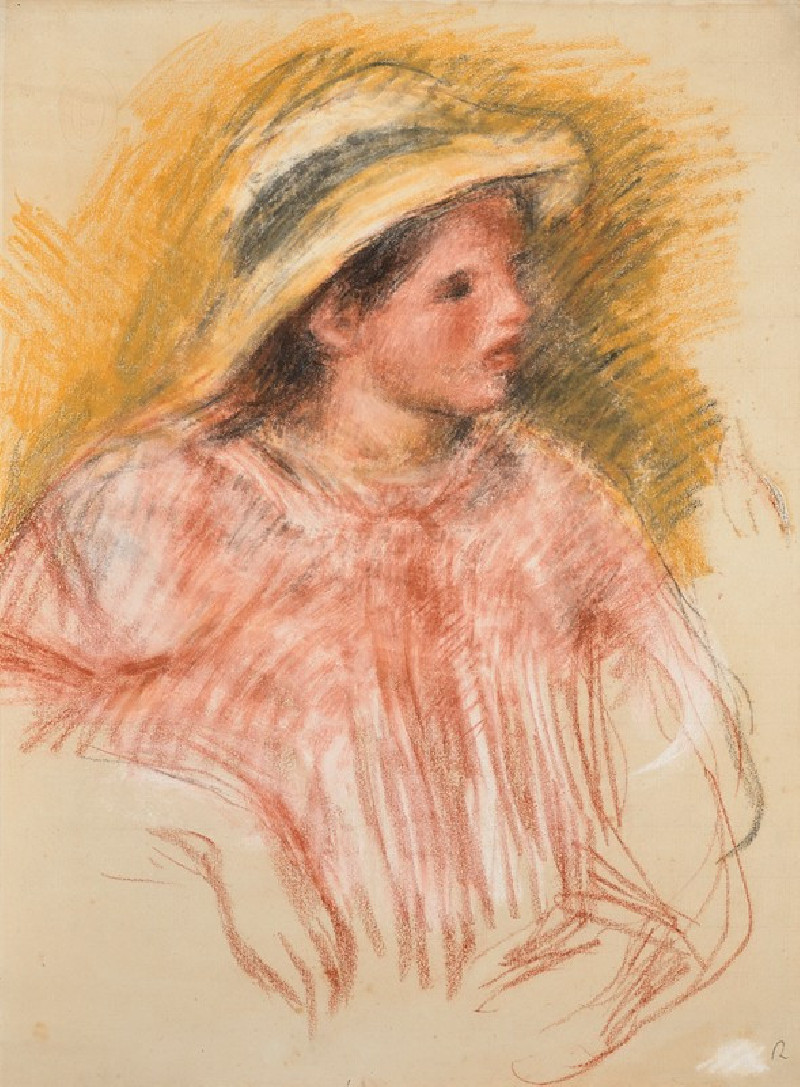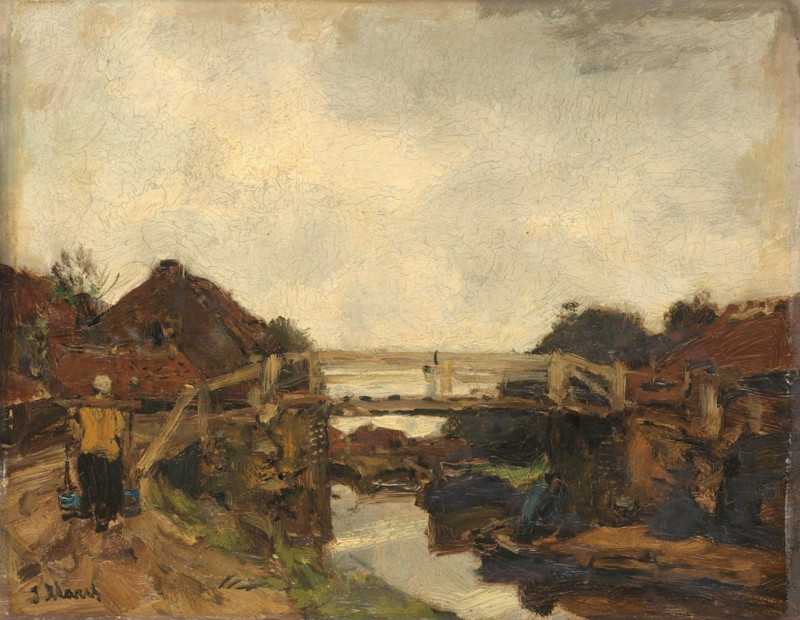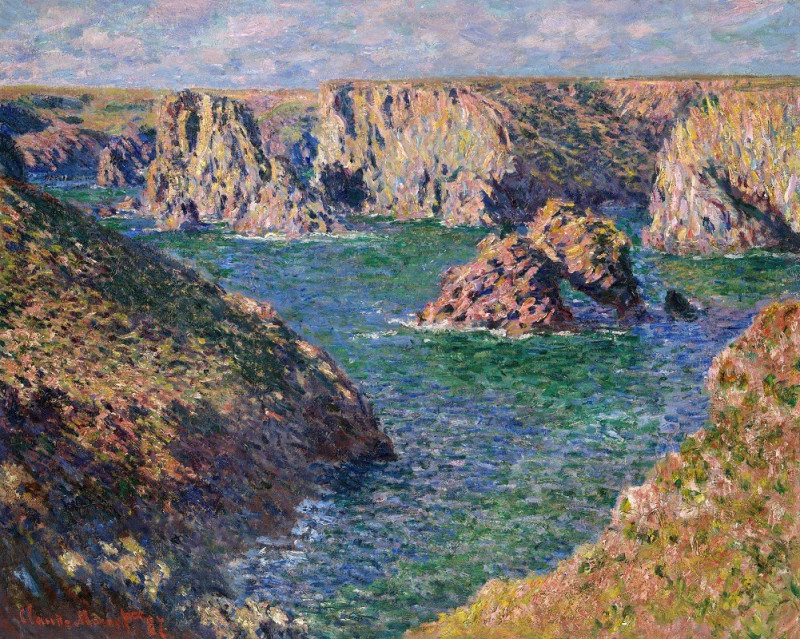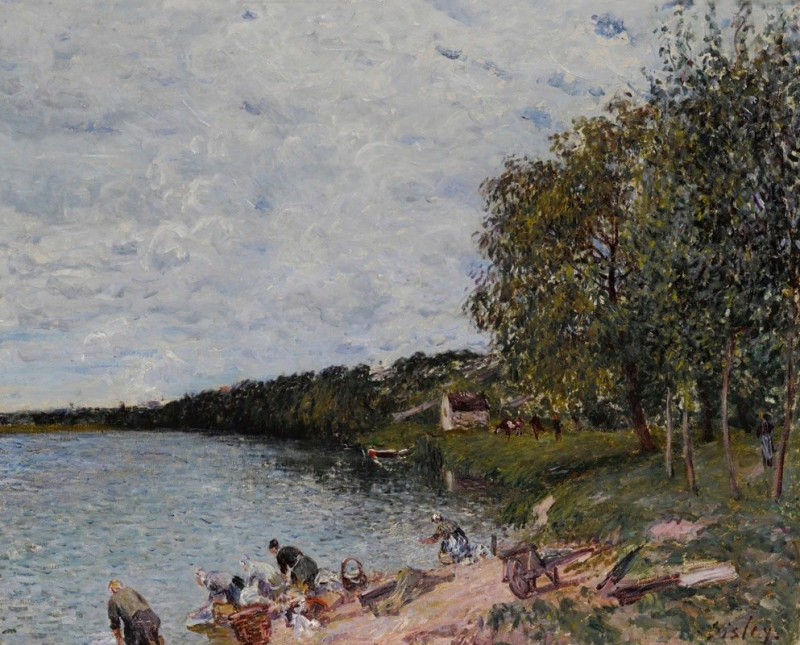Effet De Neige À Louveciennes (1874)
Technique: Giclée quality print
Recommended by our customers
More about this artwork
Alfred Sisley’s “Effet de Neige à Louveciennes” captures a tranquil winter moment in the picturesque village of Louveciennes, west of Paris. This painting, executed in 1874, is a fine example of the Impressionist movement’s embrace of natural light and atmospheric conditions.In this serene composition, Sisley presents a snow-covered landscape bathed in the soft light of a winter day. The foreground is dominated by an expansive field of fresh snow, its surface uneven and textured, suggesting recent activity. The eye is then drawn along a winding path, where a few figures can be seen in the distance, adding a human element to the otherwise quiet scene.To the left, a line of bare, thin trees and a wooden fence mark the boundary of the path, leading towards a cluster of houses partially obscured by the wintry trees. The sky, a pale winter blue, is punctuated with gentle, wispy clouds, enhancing the overall feeling of cold yet peaceful winter solitude.Sisley’s use of light blue and white hues creates a convincing play of shadows on the snow, reflecting the chill of the season, while hints of warmer tones in the buildings and foliage suggest the presence of life persisting through the cold. This painting not only portrays the physical landscape but also evokes the quiet beauty and stillness of a snowy day in the countryside.
Delivery
Returns
Alfred Sisley (1839–1899), an English impressionist artist, was renowned for his breathtaking impressionist landscape paintings. Born in 1839 to a wealthy family in Paris, Sisley spent most of his life in France. Despite being intended for a career in commerce, he rebelled and pursued his passion for painting as an amateur in the studio of Charles Gleyre, where he befriended artists Claude Monet and Pierre-Auguste Renoir. The financial loss of his family in the Franco-German War led Sisley to make a career out of his art, though it left him financially distressed. It wasn't until after his passing in 1899 that the true value of his work was recognized.

